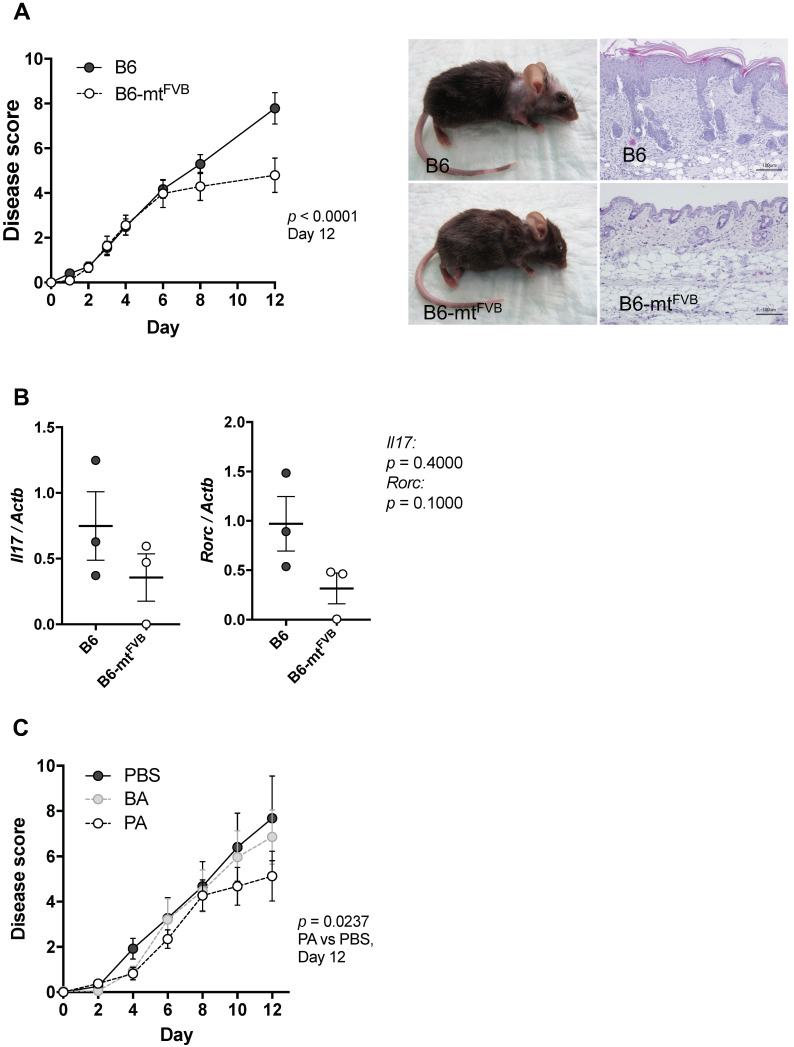Figure 4.
The natural variation, m.7778G > T in the mt-Atp8 gene resulted in significantly milder disease severity in experimental skin inflammation model, and supplementation of propionic acids mimic the effect of the mutation in diseased mice. (A) Experimental autoimmune skin disease was induced in B6-mtFVB and B6 mice by repetitive injection of pathogenic immunoglobulins G (IgG) (i.e., rabbit IgG against murine type VII collagen). Left: Disease score at day 12 in B6-mtFVB mice were significantly less than that in B6 mice. p < 0.0001, two-way ANOVA. Right: Representative pictures of clinical phenotype and skin histopathology in B6 (top) and a B6-mtFVB (bottom) mice at day 12. N = 20 (B6-mtFVB) and 17 (B6), male. (B) Relative expression of IL-17 and RORγT genes (Il17 and Rorc, respectively) to housekeeping gene (beta-actin; Actb) was evaluated in neck skin samples obtained from pathogenic IgG-injected B6 and B6-mtFVB mice at day 12 by qPCR. p = 0.4000 (Il17), p = 0.1000 (Rorc), Mann–Whitney U test, n = 3/strain. (C) Short chain fatty acids, propionic acid (PA) and butyric acid (BA), were administrated in addition to the pathogenic IgG injections in B6 mice. Mice in the control group were received PBS. Disease score in mice injected with PA exhibited significantly less than that in control mice. p = 0.0237, two-way ANOVA. N = 8 (PA) or 9 (BA and PBS). Male, 3 to 4 months old.

